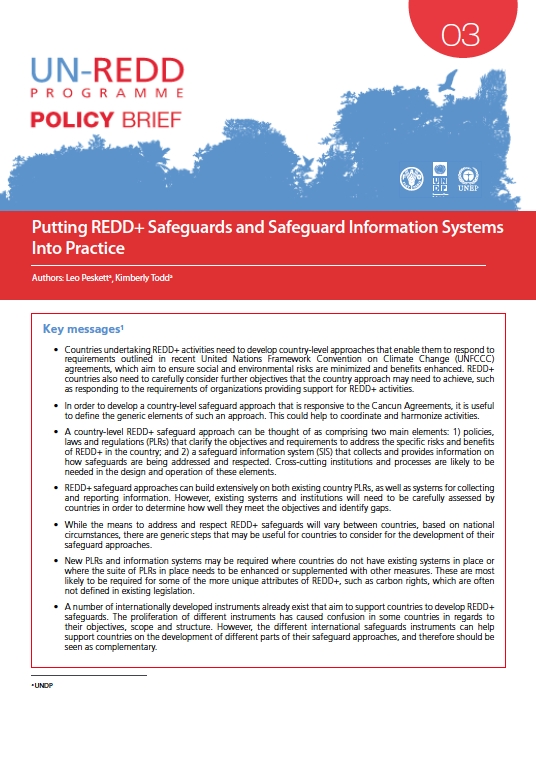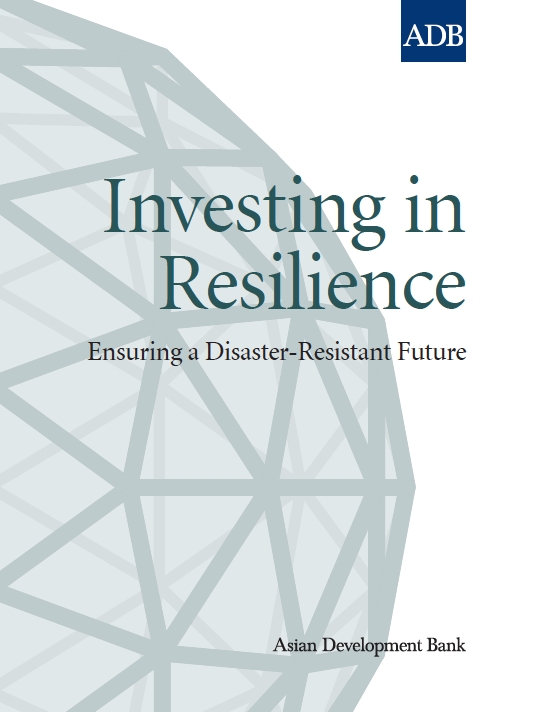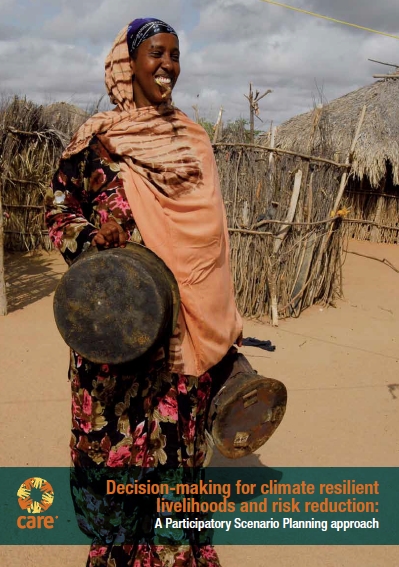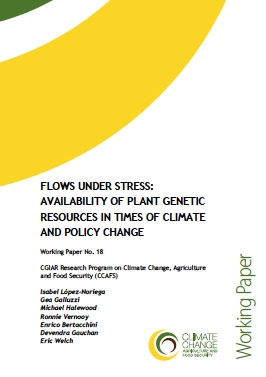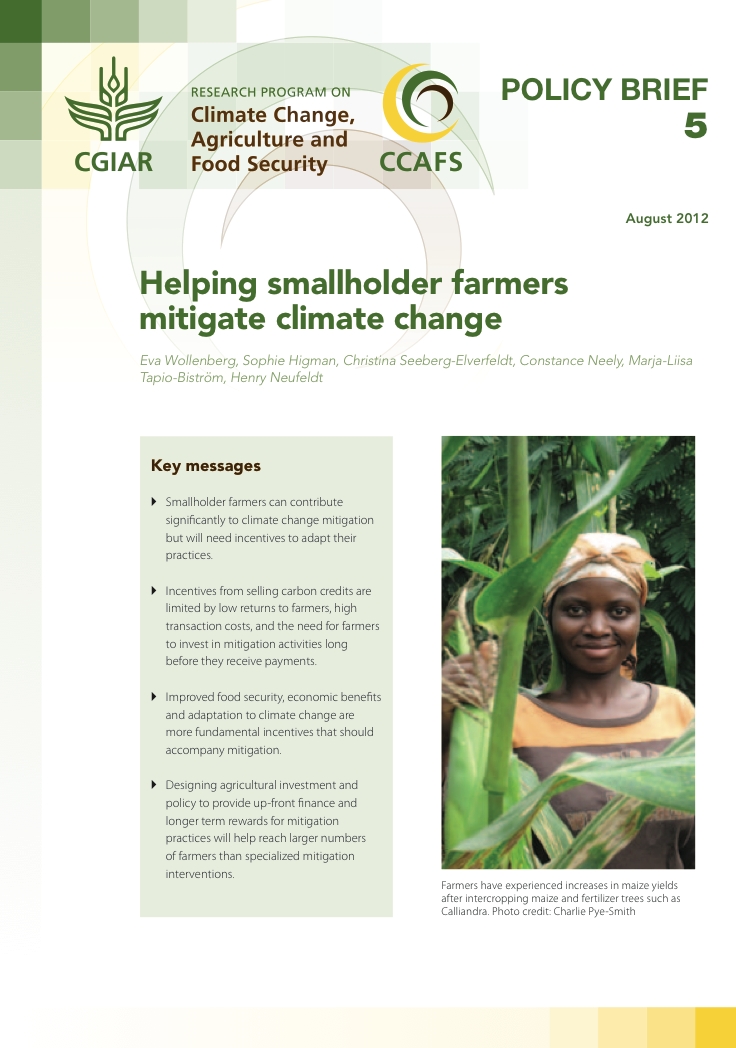Publications
This contains experience notes, adaptation notes, policy briefs, policy papers, technical reports, stories on good practices, and other publications related to climate change adaptation and mitigation in Southeast Asia not just from SEARCA, but also from KC3's partners and other agencies/institutions.
ICRAF Policy Brief 14 presents experience from the Sustainable Agriculture in a Changing Climate (SACC) project carried out in Western Kenya, a joint partnership of CARE, ICRAF and the Climate Change Agriculture and Food Security (CCAFS) Program of the Consultative Group on International Agricultural Research (CGIAR). It underscores the importance of social norms and intra-household decision making in influencing whether and how women are able to participate in, and benefit from, sustainable agriculture. The brief cautions practitioners from working with…
The book is based on results of an expert group meeting on “Population Dynamics and Climate Change II: Building for Adaptation,” which was held at El Colegio de México in Mexico City, Mexico, in October 2010. It provides key concepts linking demography and adaptation, along with case studies showing how census data and other demographic information can be used for analyzing climate vulnerability and resilience. In their introduction, the editors emphasize that analysis of population features and dynamics can be a…
The UN Collaborative Programme on Reducing Emissions from Deforestation and Forest Degradation in Developing Countries (UN-REDD) has released a report titled "Putting REDD+ Safeguards and Safeguard Information Systems Into Practice," which highlights policy considerations related to country-level safeguard systems in line with the UN Framework Convention on Climate Change (UNFCCC) Cancun Agreement. The report considers a number of steps in the development of safeguard systems for REDD+ including defining social and environmental objectives, assessing potential benefits and risks from REDD+,…
Natural hazards continue to cause significant loss of life and have significant social and economic consequences for people in Asia and the Pacific. Yet, these losses are far from inevitable. There is a wide range of tools and mechanisms available to assess, reduce, and manage risk, covering a vast array of legislative, regulatory, policy, planning, institutional, financial, and capacity-building instruments. Moreover, there is increasing public awareness of the need to strengthen disaster resilience at all levels of society as a…
Climate change will increase the frequency of extreme weather events, making more geographic places inhospitable to human habitation and secure livelihoods. This report presents a detailed picture of the potential impacts of climate change on migration in Asia and the Pacific. It draws upon a wealth of research to provide policy makers with informed analysis of an emerging phenomenon requiring urgent attention by governments and the international community. The report also suggests that climate-induced migration should be seen not only…
Adaptive Social Protection (ASP) aims to reduce the vulnerability of poor people to a range of shocks and ongoing stresses through the integration of social protection (SP), climate change adaptation (CCA) and disaster risk reduction (DRR). However there are still few documented examples of social protection programming that specifically accounts for climate change – now and in the future – or that seeks to mitigate the potential of disasters in risk-prone communities. This briefing draws policy-relevant lessons for ASP programming…
The Adaptation Learning Programme (ALP) supports improved communication of climate information to vulnerable rural communities and local governments as a key element of community based adaptation to climate change impacts. Participatory scenario planning, or PSP, is one approach which uses seasonal climate forecasts to inform decisions for more resilient livelihoods and risk management, thereby strengthening adaptive capacity. PSP workshops create a multi-stakeholder platform for collective interpretation of meteorological and local forecasts and their probability and uncertainty. This brief describes the…
Considering the importance of genetic diversity to successful agricultural adaptation, the Climate Change, Agriculture and Food Security Program (CCAFS) has released a working paper that outlines the experience of eight centres of the Consultative Group on International Agricultural Research (CGIAR) with reorganizing their activities to work on climate change adaptation. The report examines how the collection, use, and distribution of plant genetic resources by CGIAR centers are influenced by international and national policies. It concludes that climate change has not…
Key messages - Smallholder farmers can contribute significantly to climate change mitigation but will need incentives to adapt their practices. - Incentives from selling carbon credits are limited by low returns to farmers, high transaction costs, and the need for farmers to invest in mitigation activities long before they receive payments. - Improved food security, economic benefits, and adaptation to climate change are more fundamental incentives that should accompany mitigation. - Designing agricultural investment and policy to provide up-front finance…
The use of IEA tools for improved MEA implementation Over the last decade governments around the world have come under pressure to tackle a growing array of environmental sustainability risks and manage the flow of ecosystem goods and services. Recognizing the need for coordinated action, governments have negotiated and entered into many multilateral environmental agreements (MEAs) that often include concrete commitments. Based on available evidence on environmental trends and conditions, there is clearly a gap between MEA commitments and action (Victor et al., 1998). The…



